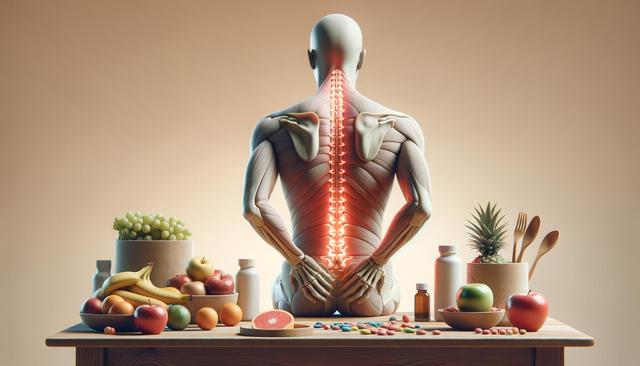Understanding the Causes of Back Pain
Back pain can stem from a variety of causes, ranging from poor posture and muscle strain to more complex conditions such as herniated discs or spinal stenosis. Identifying the underlying cause is essential for choosing the appropriate treatment. For many individuals, chronic discomfort in the lower back develops gradually due to repetitive movements or prolonged sitting. In other cases, acute pain can result from lifting heavy objects improperly or sudden twisting motions. Regardless of the origin, back pain can significantly impact daily activities and overall quality of life.
Knowing what contributes to your discomfort can help guide your treatment plan. For example, mechanical issues like strained muscles or tendons may be addressed with physical therapy and exercise. Degenerative conditions, on the other hand, may require a different approach, such as using specific medications for chronic low back pain or engaging in long-term pain management strategies.
Medication Options for Back Pain Relief
For those experiencing persistent discomfort, medications can offer significant relief when used responsibly. The type of medication recommended often depends on the intensity and cause of the pain. Over-the-counter options such as acetaminophen and nonsteroidal anti-inflammatory drugs (NSAIDs) are commonly used to manage mild to moderate symptoms. When pain becomes more severe, physicians may consider stronger options.
In cases where discomfort interferes with daily life or sleep, a healthcare provider may suggest a drug of choice for low back pain that targets inflammation or nerve pain. These may include:
- Muscle relaxants for spasms
- Antidepressants for chronic nerve-related pain
- Topical analgesics for localized relief
It’s important to consult a medical professional to determine what is the best medicine for severe back pain in your specific case, as individual responses and potential side effects vary.
Non-Medication Approaches to Pain Management
While medications play a critical role in managing back pain, non-drug therapies are equally important for long-term improvement and prevention. Physical therapy is often recommended to strengthen supportive muscles, improve flexibility, and correct posture. Additionally, practices such as yoga and Pilates can be beneficial for maintaining spinal alignment and reducing tension.
Other effective non-medication interventions include:
- Massage therapy to relax tight muscles
- Chiropractic adjustments to improve joint function
- Acupuncture for stimulating pain-relieving pathways
For those seeking instant lower back pain relief, applying heat or cold packs and engaging in gentle stretching exercises can provide temporary comfort. Combining these methods with lifestyle changes often yields the most sustainable results.
Quick Relief Techniques You Can Try at Home
If you’re wondering how to get rid of lower back pain in 4 minutes, there are several short exercises and mobility drills that can help reduce discomfort quickly. Though these techniques offer temporary relief, they can be valuable during flare-ups or when you’re unable to access medical care immediately.
Some effective quick relief strategies include:
- Child’s pose and knee-to-chest stretches
- Pelvic tilts to engage the core and lower back
- Foam rolling to release tension in surrounding muscles
These exercises help improve circulation, reduce muscle tightness, and enhance mobility. However, it’s essential to perform them correctly to avoid further injury. Pairing quick relief techniques with long-term strategies such as regular exercise and ergonomic improvements can contribute to more lasting lower back pain relief.
When to Seek Professional Help
While many cases of back pain resolve with self-care and conservative treatments, there are times when medical intervention becomes necessary. You should seek professional advice if the pain persists for more than a few weeks, worsens over time, or is accompanied by symptoms like numbness, tingling, or weakness in the legs.
In such situations, a thorough evaluation may be required to rule out more serious conditions. Diagnostic tools such as X-rays, MRIs, or CT scans can help identify structural issues that might need targeted treatment. In some cases, a multidisciplinary approach involving physical therapists, pain specialists, and orthopedic professionals may be the most effective way to manage complex or chronic pain.
Ultimately, the goal is to restore function and improve quality of life. Whether using medications for chronic low back pain or exploring alternative therapies, a tailored approach that considers your specific needs and health status is essential.
Conclusion: Taking Control of Your Back Health
Back pain can be challenging, but with the right combination of treatments, it is often manageable. From understanding the causes and exploring the drug of choice for low back pain to trying out quick relief methods and lifestyle changes, there are many avenues to address discomfort effectively. If you’re navigating chronic symptoms, working with a healthcare provider to identify what is the best medicine for severe back pain in your case can lead to better outcomes. Remember, long-term lower back pain relief often involves a mix of medical treatment, physical activity, and self-care. Taking proactive steps today can help you regain comfort and mobility tomorrow.




Leave a Reply